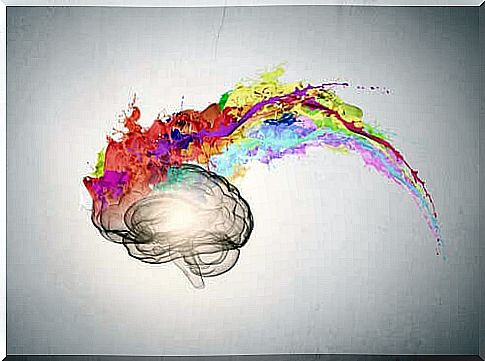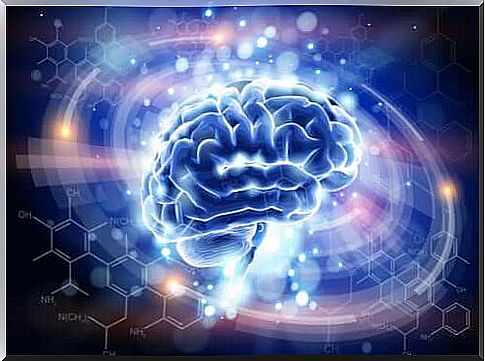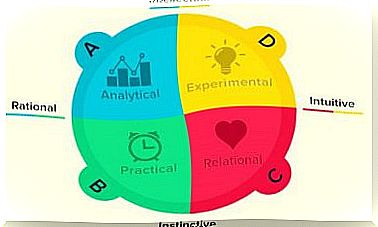Visuo-tactile Synesthesia: A Way To Connect With Others

We are in daily contact with others, with ourselves and with nature, but… Are we deeply connected? Connecting to your environment is not always easy; for people with visuo-tactile synesthesia, we can say it is.
In this article, we invite you to explore this unparalleled form of connection. We will start by presenting what synesthesia is. We will then deepen the characteristics of visuo-tactile synesthesia. Finally, we will see how it is possible to measure this phenomenon.
What is synesthesia?

Can you imagine music in color? Do you think you are able to differentiate tastes based on words? People with synesthesia can.
Synesthesia is a kind of sensory alteration. A stimulus specific to one sense generates sensations typical of another sense. It may sound strange, but this way of seeing things is by no means a disease; this ability does not appear in any clinical picture.
There are different forms of synesthesia:
- Grapheme-color synesthesia: the person is able to associate letters with colors. For example, the letter “a” can be associated with red, the letter “b” with yellow, the letter “c” with green…
- Sound-color synesthesia: this is the ability to assign a color to a sound heard.
- Lexical-gustatory synesthesia: those who present this form of synesthesia are able to associate a word with a taste. In other words, they associate words with likes
- Personifying Synesthesia: This form of synesthesia affects people who are able to perceive the personality of letters and numbers
The characteristics of visuo-tactile synesthesia

Also called mirror-to-touch synesthesia or tactile-mirror synesthesia, visuo-tactile synesthesia consists of an experience of tactile sensations caused by the sight of a person being touched. Sounds amazing, doesn’t it? Let’s see what are the main characteristics of this type of synesthesia:
- Activation of the somatosensory cortex, which activates the feeling of being touched
- This phenomenon takes place in the person’s own body : it is the sensation that people who present with visuo-tactile synesthesia feel.
- The experience is conscious. This characteristic is a condition to determine that it is indeed a visuo-tactile synesthesia.
- It is a different stimulus than usual that induces the response
- Automaticity : experiences take place without being thought out beforehand
The different theories
There are many theories about what causes this type of synesthesia, but there are three main ones:
- Sensory mirror: This theory suggests that people exhibit visuo-tactile synesthesia when activations of the somatosensory mirror system occur below the normal threshold
- Visual and Somatosensory System Theory: This theory suggests that people with visuo-tactile synesthesia have a directly connected visual and somatosensory system
- Bimodal cell theory : this theory considers that bimodal cells, when touched, are activated, whether the stimuli are tactile or visual
Specialists are also interested in mirror neurons, which seem to be more numerous in people with visuo-tactile synesthesia. Therefore, in people who do not have this ability, these neurons would only activate imitative responses. Whereas people who possess this ability experience these responses as if they were real.
In addition, visuo-tactile synesthesia is associated with empathy. It seems that in people with this form of synesthesia, the activation of the mirror systems is more important. This is why they develop greater empathy.
Is it possible to measure visuo-tactile synesthesia?
Several studies have attempted to measure this form of synesthesia using different methods in order to better understand it. Resonance and thermography, for example, are two such methods. Thanks to these researchers, we have a deeper understanding of how visuo-tactile synesthesia works.
Blakemore, Bristow, Bird, Frith and Ward, in the article Somatosensory activations during the observation of touch and a case of vision-touch synaesthesia published in the neurobiology journal Brain , show the experiment they designed. This experiment consisted of showing the neural system mixed with the perception of touch through magnetic resonance.
This study was carried out on people who had no form of synesthesia and on a “C” woman who presented with visuo-tactile synesthesia. The researchers analyzed the subjects’ neuronal activity as they watched someone being hit in the human face and neck; their objective was to analyze the somatosensory typography in both cases.
The result was the following: The activation patterns of “C” differed from the control people (people who did not have synesthesia) in three ways:
- Activations in the somatosensory cortex were much more significant
- Activation of the left premotor zone in “C” was greater than in people without any form of synesthesia.
- The cortex insula activated in “C”, but not in people who did not have any form of synesthesia.
Thanks to these measurements, the researchers were able to demonstrate that “C” relies on a mirror system located above the normal threshold for tactile perception of conscious form.
Thermal asymmetry
For her doctoral thesis, Elvira Salazar investigated whether the observation of painful and tactile stimuli generated bodily asymmetry in the observer’s thermogram. In other words, by using thermography, a technique that allows the temperature to be recorded graphically, it was a question of observing the asymmetry. Why ? Normally there should be symmetry, unless disease is present. The question was whether, without disease and during an experience of pain and touch, thermography would show asymmetry.
This is how the researchers found an objective measure to study the physiological manifestations of visuo-tactile synesthesia, beyond models of brain activity, subjective experience and behavioral markers: thermal asymmetry.
The tactile sensation after observation is so deep in people with visuo-tactile synesthesia that those with this skill are believed to be much more empathetic. It’s an awesome way to connect with others! We hope that further studies will give us more information on the subject and on other forms of synesthesia. And that we will know much more about this curious phenomenon!










